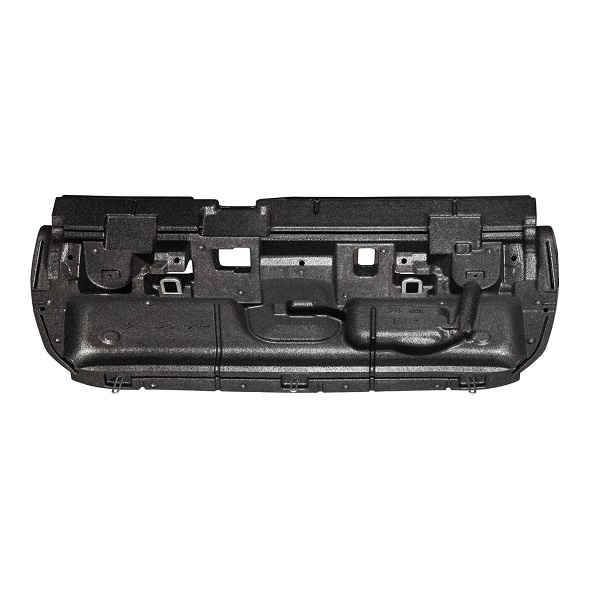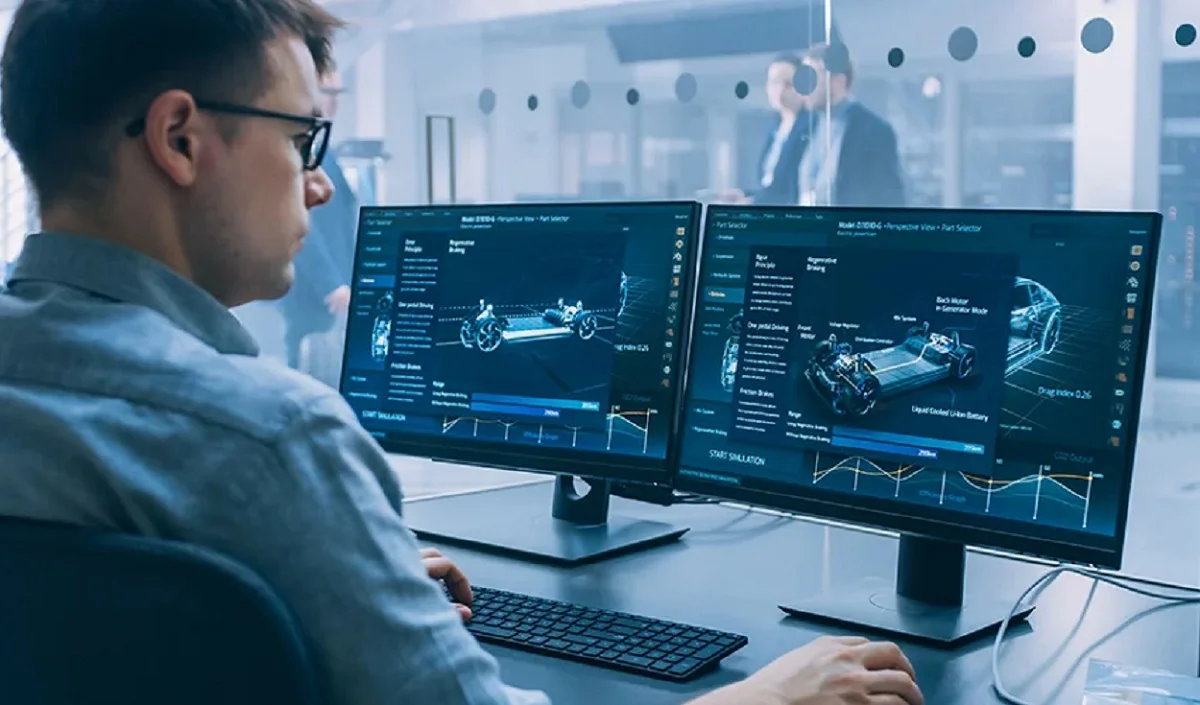Industry 5.0, also known as the fifth industrial revolution, is a new concept that emphasizes the human aspect of technological development. In the automotive industry, this means combining advanced technologies such as artificial intelligence and robotics with human skills and creativity.
The concept of Industry 5.0 first appeared in 2016 in Japan. It constituted a response to the growing challenges of globalization, an aging population and climate change. Industry 5.0 assumes deepening the integration of humans and technology, which is expected to increase efficiency and flexibility in the production of auto parts, as well as promote more sustainable manufacturing processes. The lessons learned from the COVID-19 pandemic have clearly shown that such a solution can also make the manufacturing and logistics sector more resilient to crises, among other things, through better supply chain management. Above all, however, technology is meant to serve people. It is also intended to be more environmentally friendly, as the focus is on resource conservation and circular economy. The adoption of Industry 5.0 in the automotive field may also translate into increasing personalization of vehicles, better management of resources and greater flexibility to respond to changing market needs.
Industry 5.0 – what are its characteristics?
In many respects, Industry 5.0 differs from Industry 4.0. The main emphasis in this case has been on human-machine collaboration, where technology supports employees in carrying out their daily tasks. Industry 4.0, on the other hand, focuses mainly on the automation and digitization of manufacturing processes, with an emphasis on the Internet of Things (IoT), Big Data and artificial intelligence.
Another important difference lies in the personalization of solutions. Industry 5.0 strives for greater individualization of the product, which is supposed to respond as accurately as possible to customer needs. Industry 4.0, on the other hand, envisions mass production using advanced technologies. Another difference concerns the attitude toward the environment.
Industry 5.0 actively promotes green and sustainable manufacturing practices, such as the use of renewable energy sources and recycling. In contrast, Industry 4.0 focuses primarily on improving energy efficiency, but does not always take sustainability into account. However, focusing on making the best use of energy without considering other factors leads to production cycles being more susceptible to crises. Therefore, under the Industry 5.0 concept, manufacturing systems are designed to survive, for example, pandemics or other supply chain disruptions.
Key aspects of Industry 5.0
The idea of Industry 5.0 is best described by five key concepts most commonly mentioned in publications on the subject:
- Human-centric – technology is designed for people and with the goal of supporting them, not replacing them. Employees are the most important component of the production process due to their skills, experience and creativity.
- Personalization – production of auto parts should be more flexible and customized. Advanced technologies such as artificial intelligence and robotics allow for cost-effective manufacturing of customized products.
- Sustainability – Industry 5.0 promotes green and sustainable manufacturing practices, such as the use of renewable energy sources, material recycling and waste reduction.
- Resilience – Production systems are designed to operate smoothly even in crisis situations, so that companies can respond faster to changing market conditions.
- Human-machine collaboration – robots and AI systems perform routine and potentially dangerous tasks for workers, allowing them to focus on more creative and valuable activities.
Industry 5.0 vs. auto parts manufacturing
Industry 5.0 can significantly change the production of auto parts, and it can do so in many ways. With advanced technologies such as artificial intelligence and robotics, it will be possible to produce customized car parts. Of great importance here is, for example, 3D printing, which allows for rapid prototyping and custom manufacturing of automotive parts.
It is assumed that in Industry 5.0, robots and AI systems will create a safer working environment for humans, allowing them to focus on more complex tasks and innovation. BMW already uses so-called cobots – collaborative robots – which work side-by-side with humans to assemble small components. Artificial intelligence (AI) is expected to help optimize car manufacturing, predict machine failures and manage the supply chain. Such a solution has been implemented e.g. by Audi which is using it in its quality management process to reduce the number of defective parts. In addition, thanks to the Internet of Things (IoT), machines and equipment form a smart network, making it possible to monitor and manage production processes in real time. On the other hand, the emphasis on environmental protection in the manufacturing dimension of auto parts will translate into greater use of renewable, recycled materials, avoidance of wastage, and use of renewable energy sources.
Implementing Industry 5.0 in the automotive industry

Implementing the objectives of Industry 5.0 in an automotive company requires consideration of many aspects and a strategic approach to implementation. The first step is to assess the current state. An audit of the organizational and technological structure will make it possible to determine the stage the company is at and identify areas that need to be modernized. Investment in employee training will certainly be necessary. Industry 5.0 places a clear emphasis on human-machine cooperation, so it's very important that employees are properly prepared to work with new technologies.
The next step is the implementation of cobots, which are designed not only to make the production of car parts more efficient, but also to improve workplace safety. Machine learning in the automotive industry is an extremely forward-looking area due to the nature of the work and the type of parts being handled. That's why it's also worth tapping into the benefits of artificial intelligence and the Internet of Things (IoT). These will be essential for monitoring and optimizing production processes. In order to implement all these elements, it is necessary to enlist the help of professional companies that offer such services.
Since one of the key elements of Industry 5.0 is environmental sustainability, it will also be necessary to consider the use of renewable energy sources to power the smart factory and the use of recycled materials or technologies that enable the rational use of raw materials. This means a very positive outlook for plastics in the automotive industry. In the coming years, plastics in automotive construction will play an increasingly important role as they perfectly meet the requirements of modern manufacturing. The EPP and EPS car components produced at Knauf Industries allow the development of extremely lightweight and recyclable parts that provide a wide range of design possibilities.
Benefits of Industry 5.0 for automotive parts manufacturing
There are many benefits to implementing Industry 5.0 in a company that manufactures automotive components, increased productivity being one of them. Introduction of cobots enables better use of material and human resources. More precise monitoring of production processes by AI will also result in better quality control and fewer defective parts. Another benefit is cost reduction, thanks to the automation and optimization of production processes. Better resource management and waste minimization should also contribute to financial savings. On the other hand, the personalization of auto parts manufacturing and greater flexibility make the company more adaptable to rapidly changing market needs, while being more stable and resilient to any disruptions in the market environment. In contrast, the implementation of sustainability principles helps reduce the carbon footprint and reduce the environmental impact of operations. This can not only transform the company's image, but also potentially facilitate business relationships with larger customers who require their partners to be environmentally friendly and meet certain standards.
Challenges and the future of Industry 5.0

The rise of Industry 5.0 comes with many uncertainties and challenges. The most obvious involves the high cost of purchasing advanced technologies such as cobots, AI and IoT. Companies planning to implement the technology must be ready to make significant investments in infrastructure and employee training.
Another problem may be the integration of new technologies into existing production systems. This requires careful planning and coordination to ensure the smooth operation of all elements of the business. An extremely important aspect in this regard is data security. With the growing use of IoT and AI, the amount of data generated and processed by the enterprise is also increasing. This makes it a possible target for cyberattacks, necessitating appropriate security measures.
The human factor is also of no small importance. The introduction of new technologies and processes may be met with some resistance from employees. It is important to manage change in a way that minimizes stress and uncertainty for employees.
Meeting environmental requirements may also prove problematic. Companies need to find the right balance between sustainability and profitability of operations. Despite all these challenges, Industry 5.0 is a very promising concept.
Where is the development of Industry 5.0 headed?
The innovation under Industry 5.0 centers on more advanced collaboration between man and machine with an emphasis on greater intuitiveness and efficiency of interaction. Digital twin technology, or virtual models of real objects, will be used more and more widely to monitor and optimize design and manufacturing processes. This approach should allow the company to better manage its resources and respond to problems more quickly. Artificial intelligence and machine learning will continue to be developed so they can perform more sophisticated data analysis. As a result, it will allow even better production and quality management.
With the growing use of digital technologies, data security will become increasingly important, and companies are also expected to increase investment in advanced systems to protect against cyber attacks. Greater transparency and data security in the supply chain management process itself will be provided by blockchain technology. Industry 5.0 will increasingly focus on conserving resources and creating a circular economy where materials are recycled and reprocessed multiple times without loss of quality. Bio-inspired devices and smart materials that, for example, can repair themselves or change their properties depending on environmental conditions are also a highly promising direction of development.